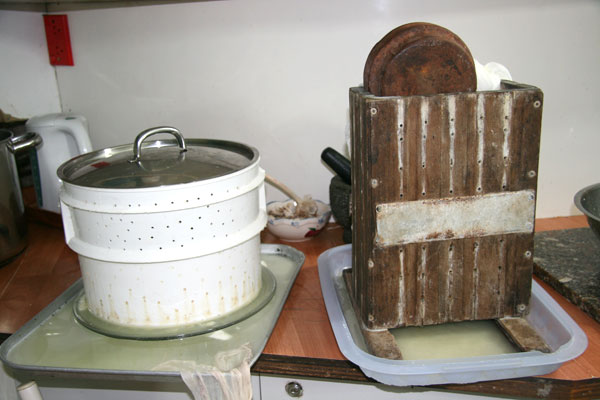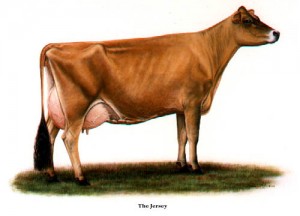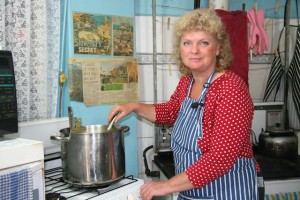What kind of milk is best for making Cheese?
When we caught up with Elisabeth Fekonia she was clutching her new Cheese-making DVD as she was preparing for an official launch at the local library near her home at Cooroy in Queensland.
We had a number of people ask if you need to keep a cow or a goat at home in order to make your own cheese? Elisabeth says you can still make cheese from any kind of milk although raw milk is best if you can get it.
“Alternatively pasturised only milk is okay if you can find it on the shelves of your store.” she said.
Cheesemaking implements, knives, containers and presses can be easily made from recycled materials as long as they are sterilized with hot water before use.
If you’re in the market for a cow and have a small acreage Elisabeth recommends a Jersey cow as a great milking breed. “This cow produces the creamiest of cheese.” she said. “and also the most cream for making fresh butter.”
As for buying a goat, not all breeds are best. Elisabeth recommends you get yourself a Anglo-Nubian breed. “They make the creamiest milk which is great for cheese-making.”
Cheese-making can be a complex process but Elisabeth has been teaching her popular cheese-making course for 15 years and says she regularly seeks feedback from students to help her improve her teaching skills. “You got to listen to your students and seek written feedback.” she says. “Over the years I have learnt to be particular over certain cheese-making techniques and explain things clearly so that any beginner can easily learn the process and not be left behind. I have tried to be very clear in this DVD and explain the whole process in simple terms that anyone can grasp.”
Elisabeth stresses that people need a healthy immune system to stay well. She is a keen supporter of Probiotics.
“Getting healthy bacteria into your gut flora to enhance your immune system.” she says. “Making one’s own fresh yoghurt with culture and kefired milk is essential in your family’s diet. It will boost your health and vitality.”
Elisabeth describes the cow as the matriarch of the Farm. “When you get a cow you will soon realize the advantages of getting a pig and even some chickens.” she explained, “When you make cheese you will have some excess Whey. That Whey is half the nutritional value of milk. You don’t throw it away and lose the benefit. You feed it to – the pigs!” she laughs. “But it doesn’t end there. The pigs are then herded into secure pens in the garden to root around in the soil churning over the mud, depositing manure and cycling nutrients that then feed our vegetable garden. This is typical Permaculture.” says Elisabeth. “The chickens are also part of the cycle. I grow Sunflowers and feed the seeds to the chickens and get eggs and meat in return. These cycles are common on Permaculture farms like ours.”
“Everyone should try and make their own dairy products and feel the difference.” She said.










I saw a video that explains the advantages of probiotics, but it only mentioned some of the sources. here’s the video : http://www.youtube.com/watch?v=neHbUI2JiPw I’ve researched further and found out that kimchi and miso are also good sources of probiotics. too bad cheese isn’t on the list 🙁